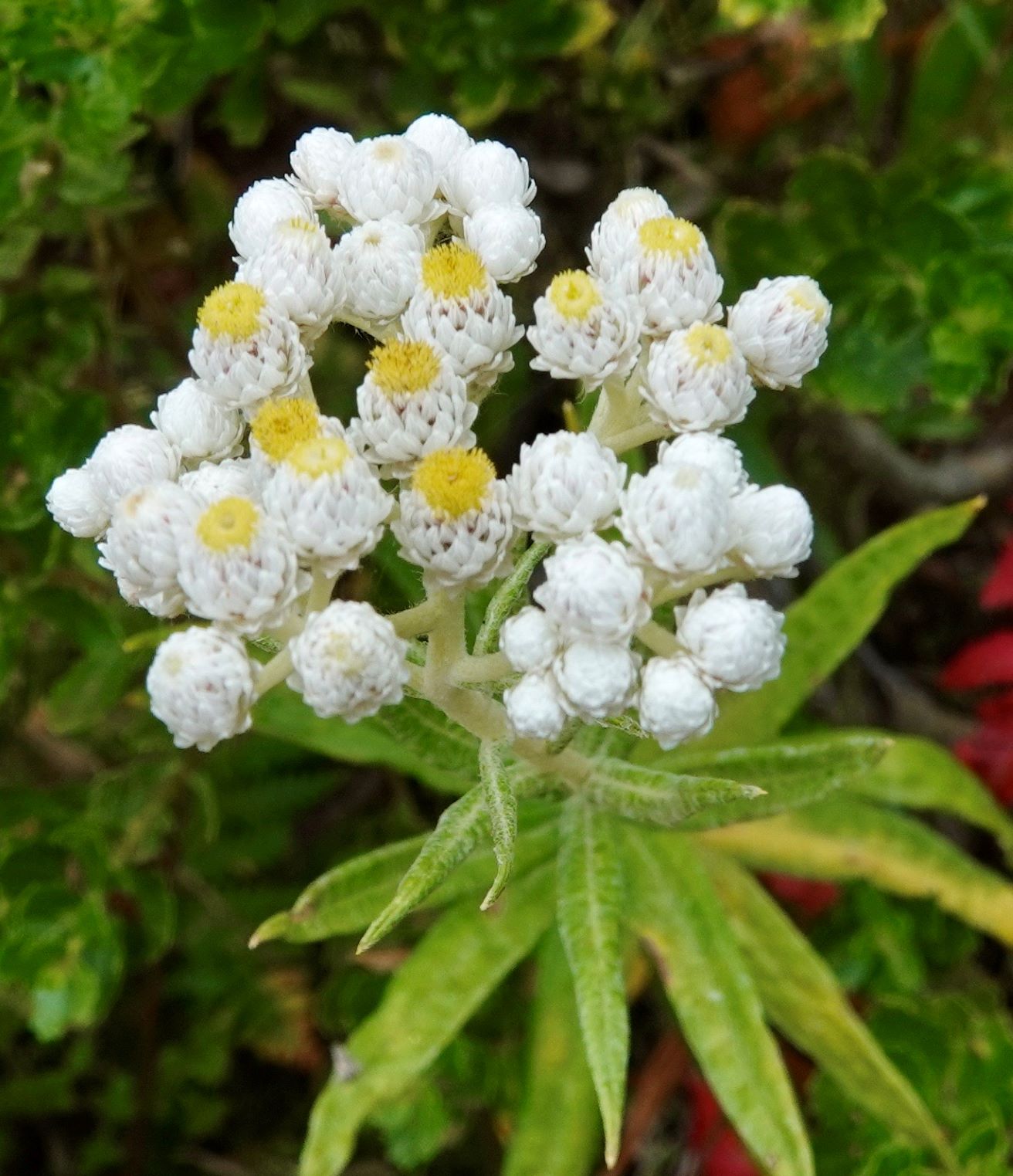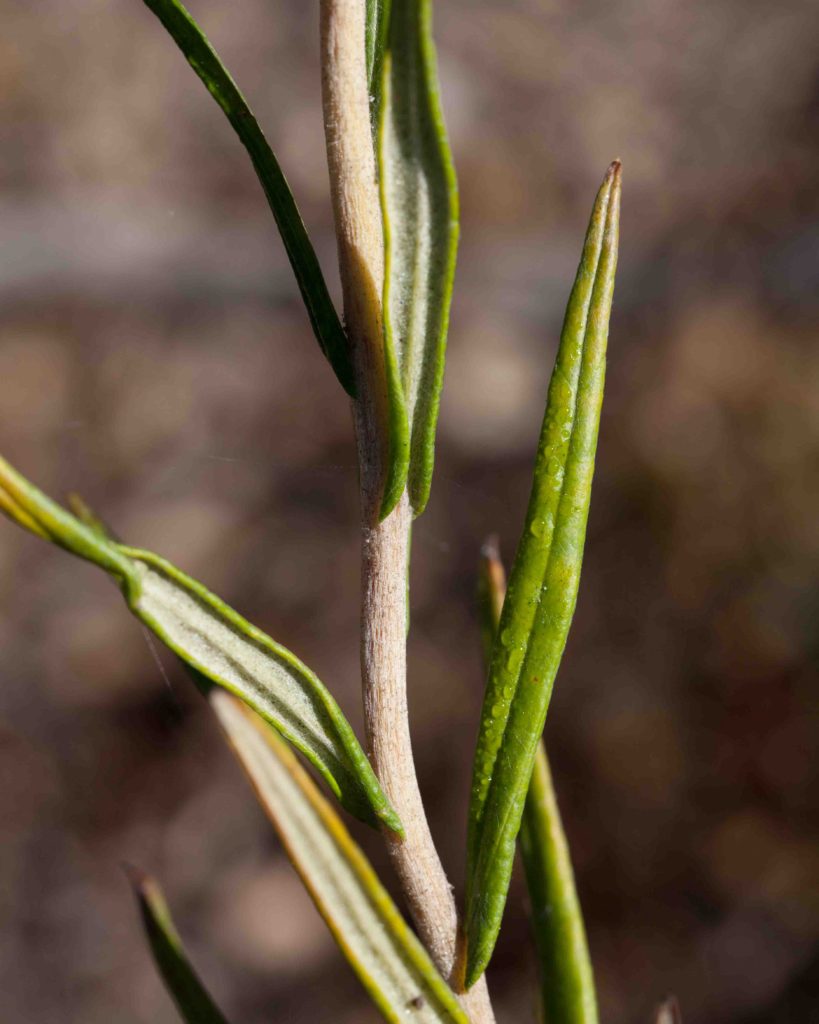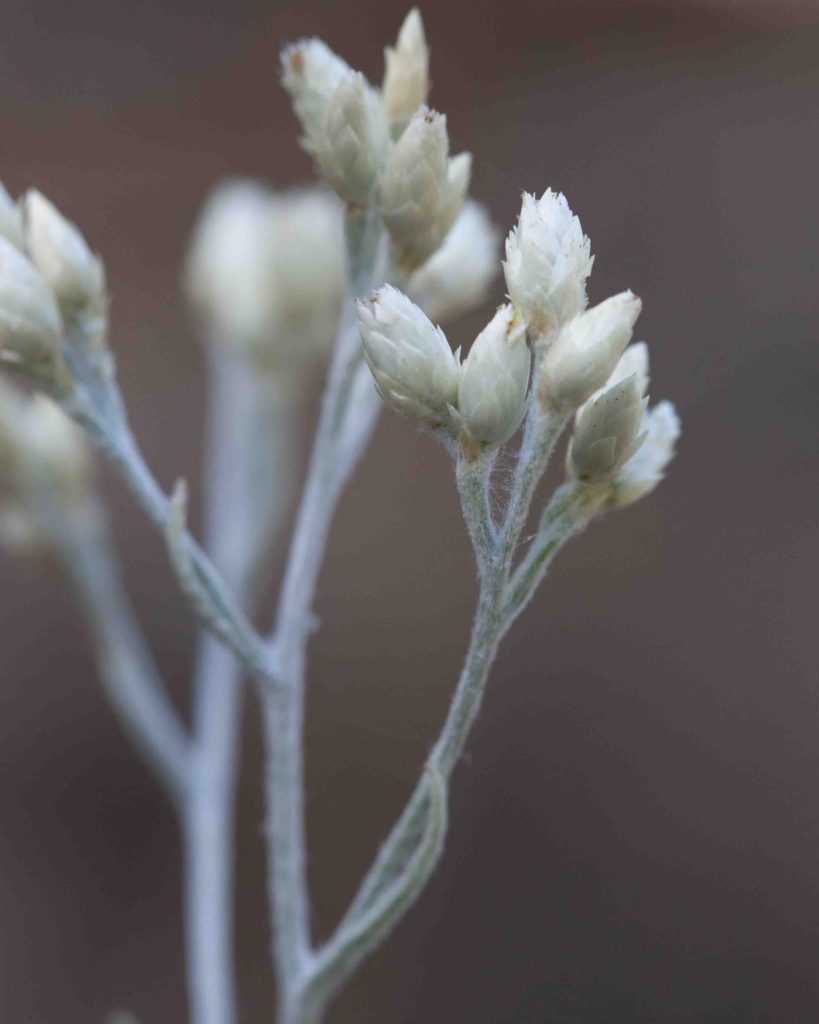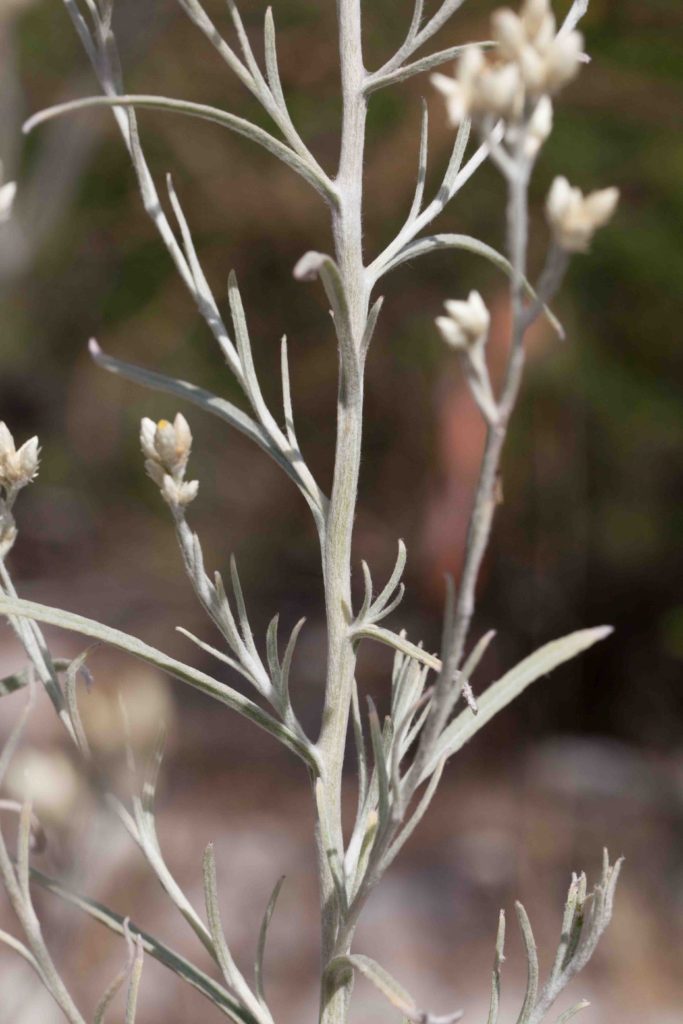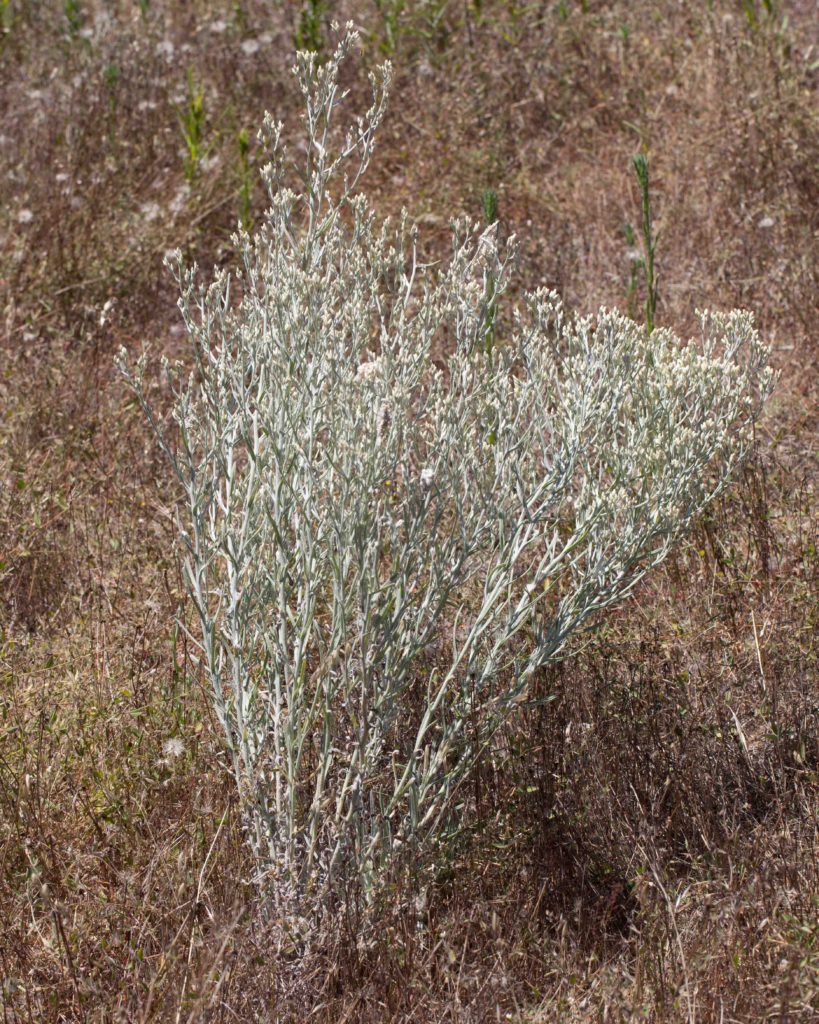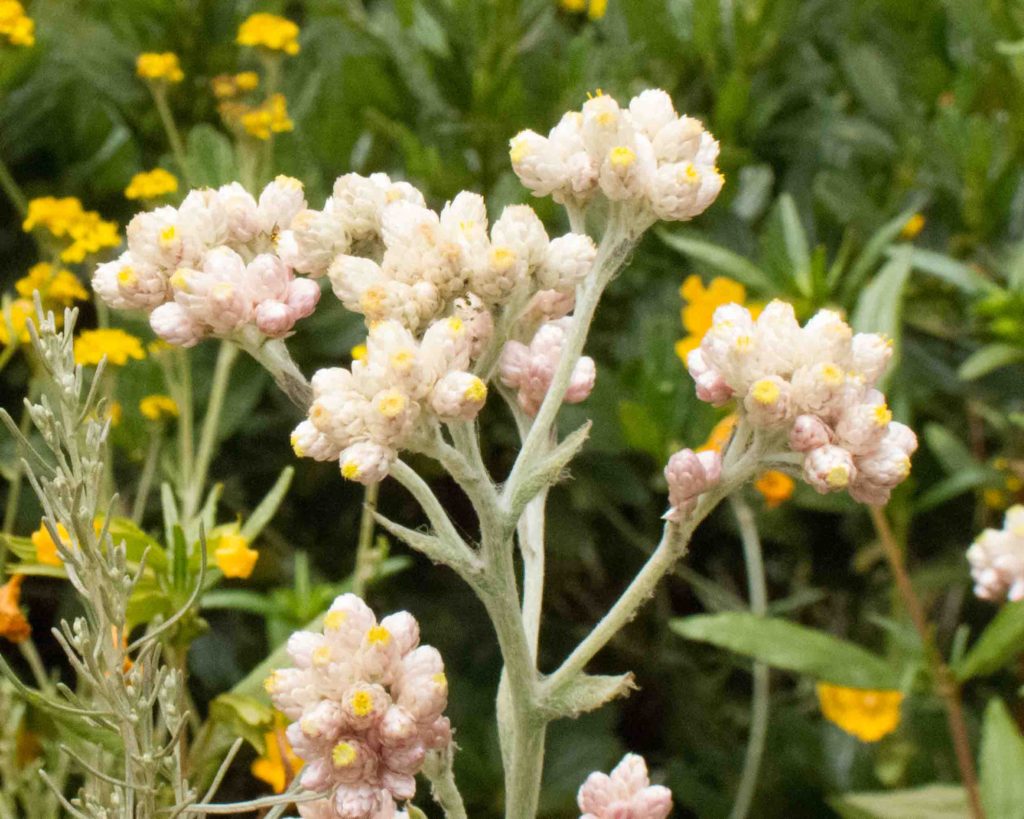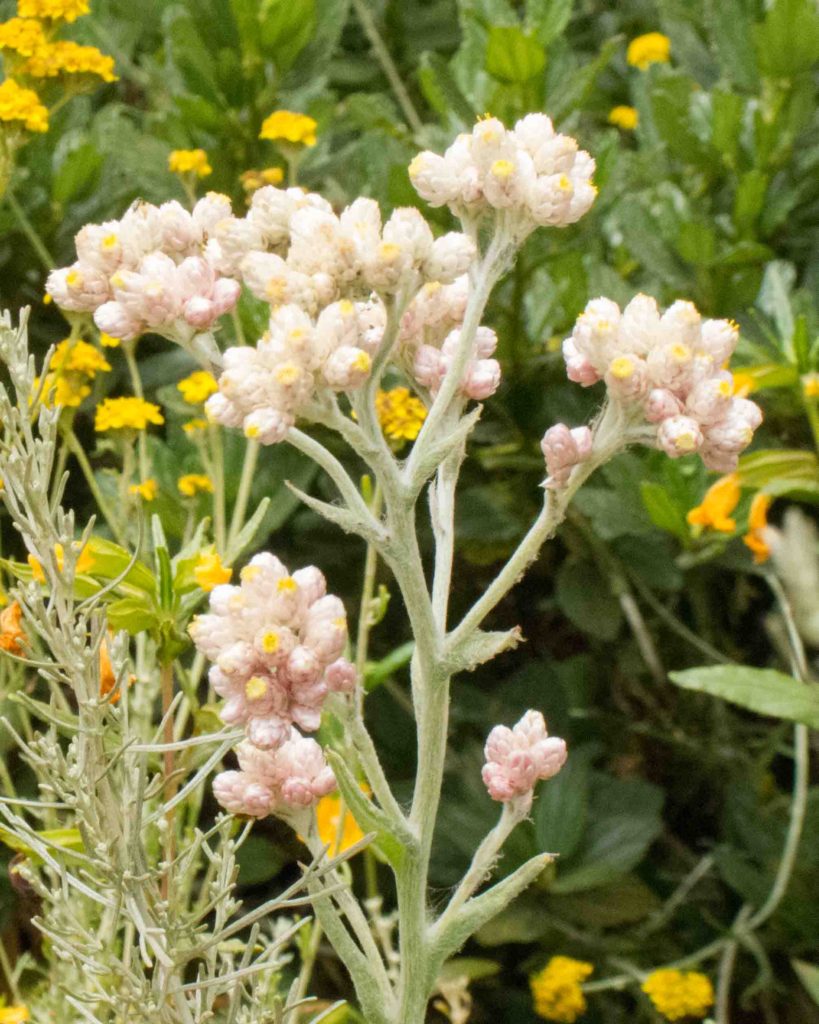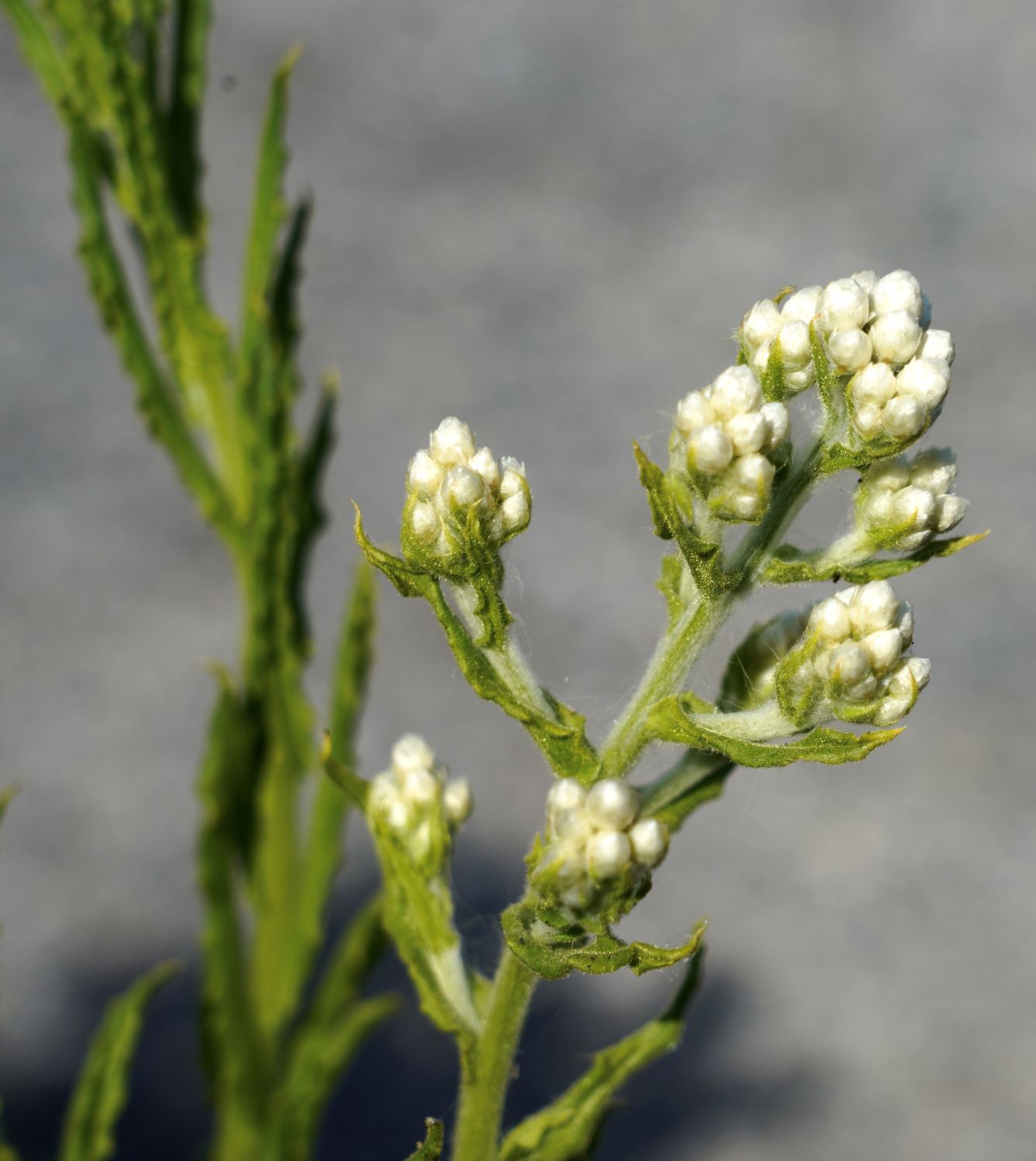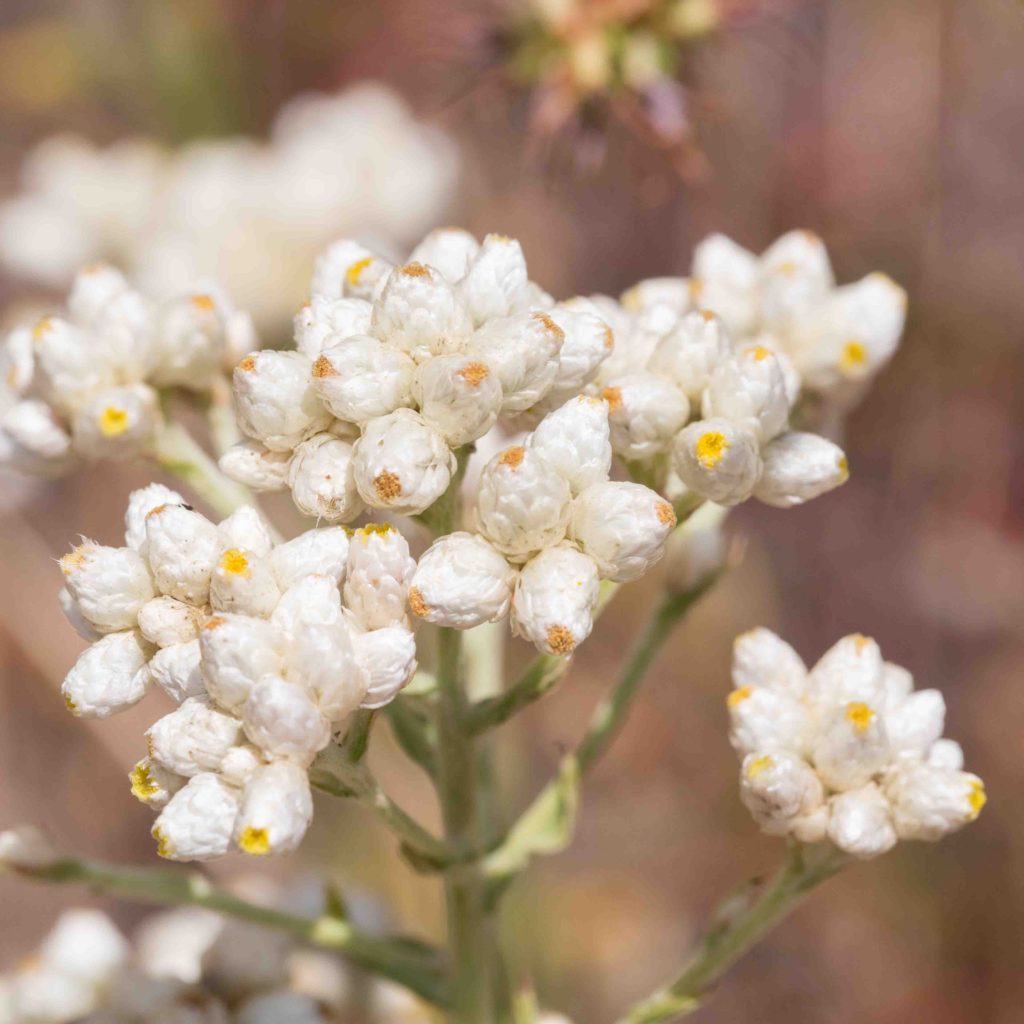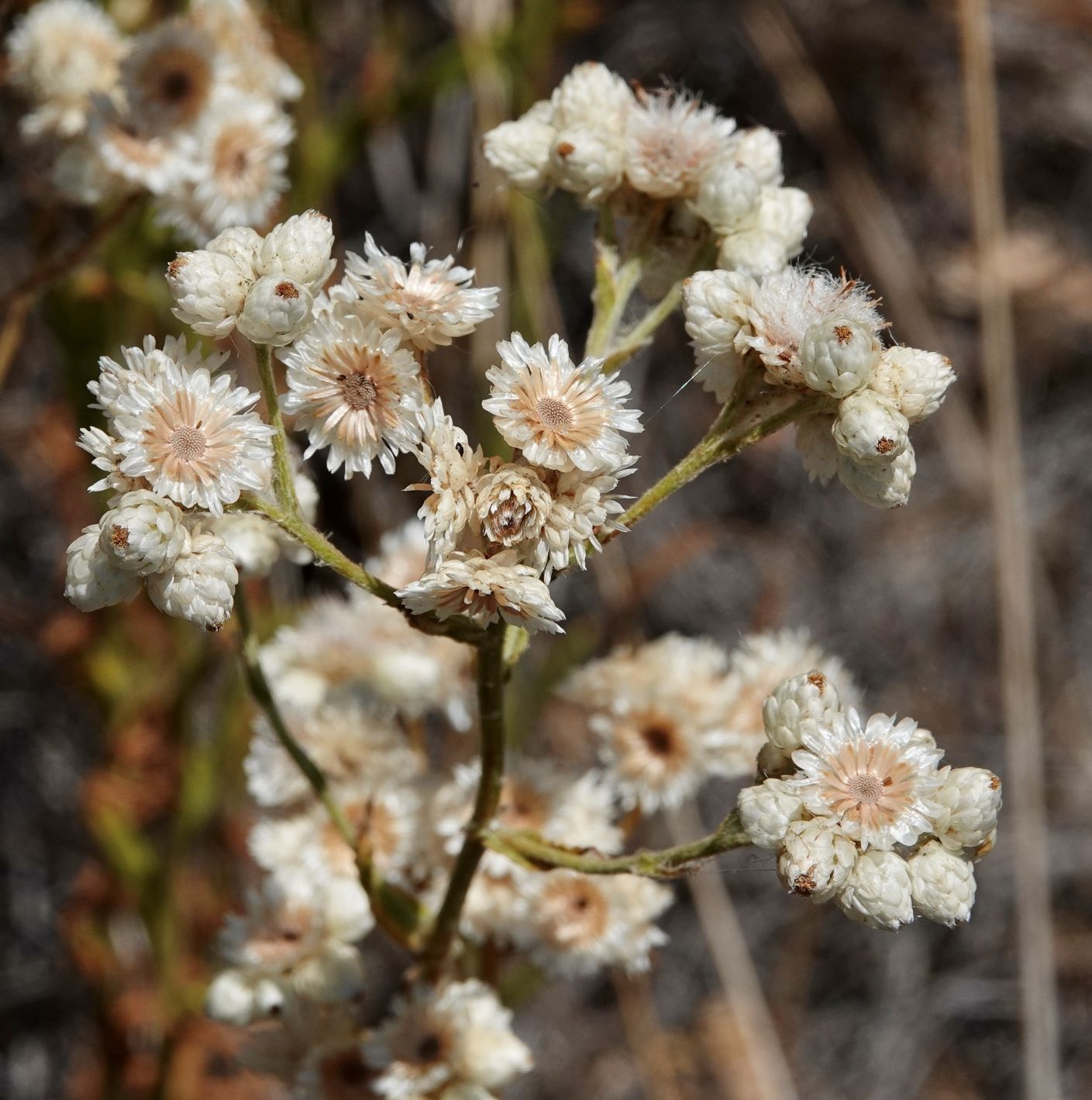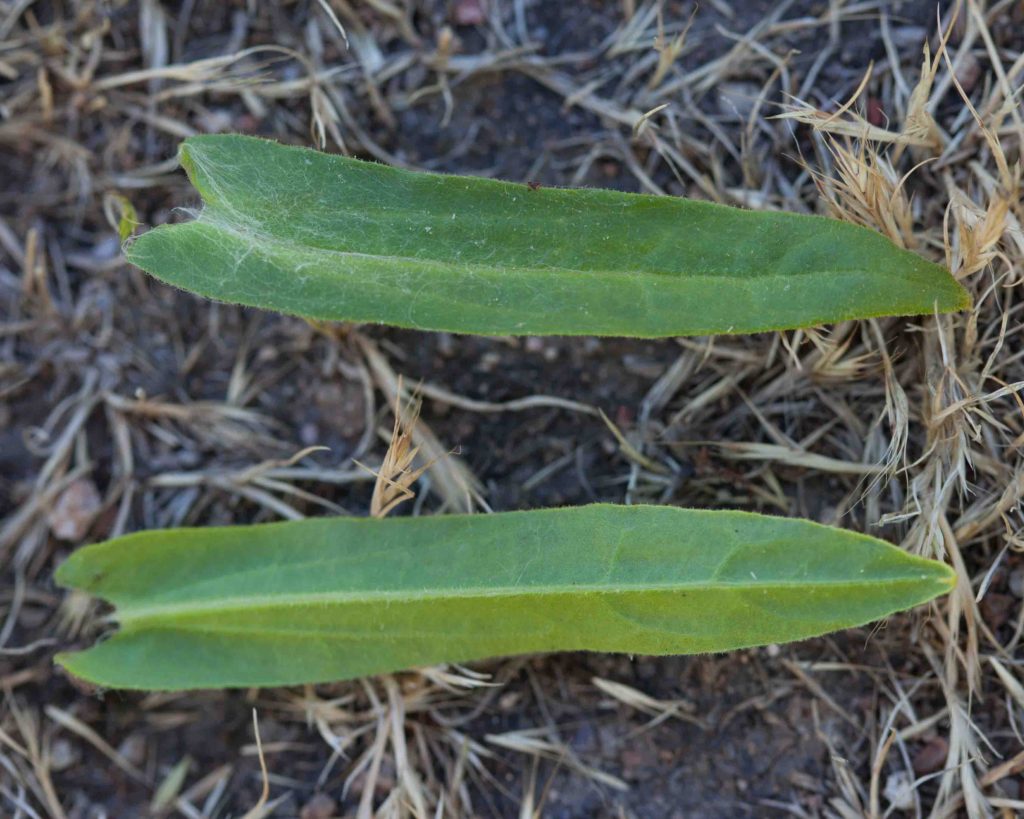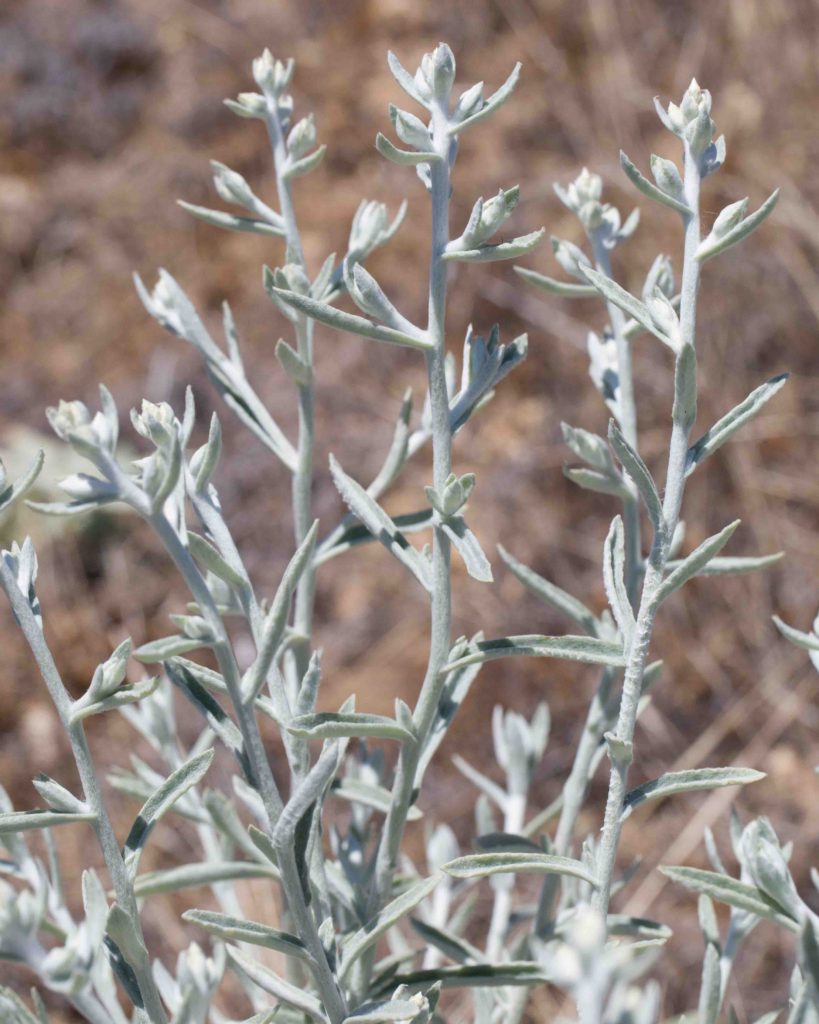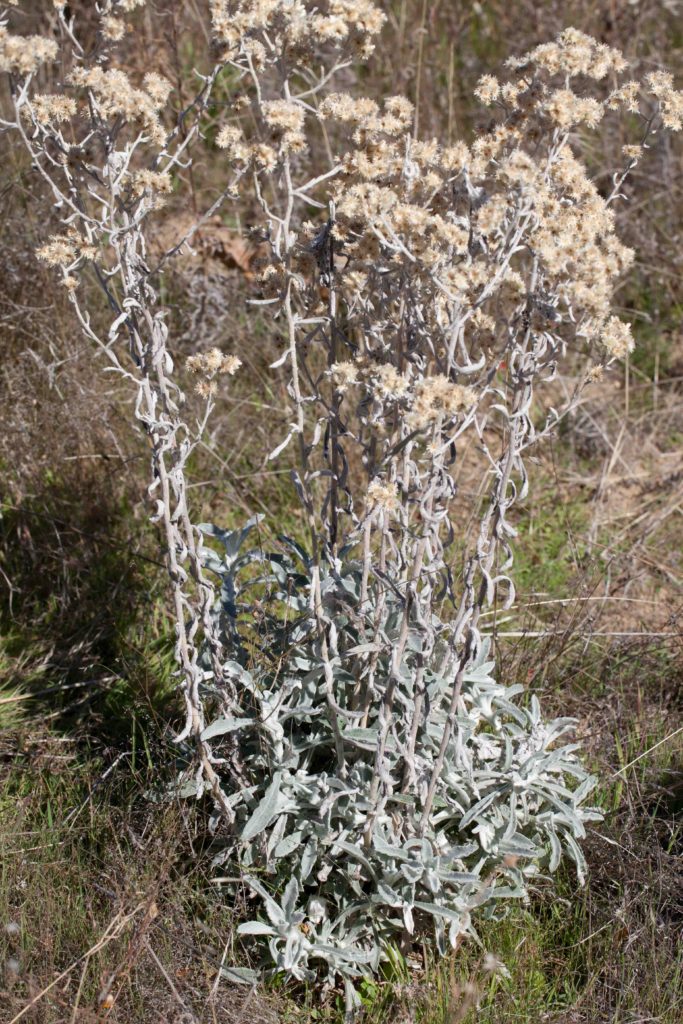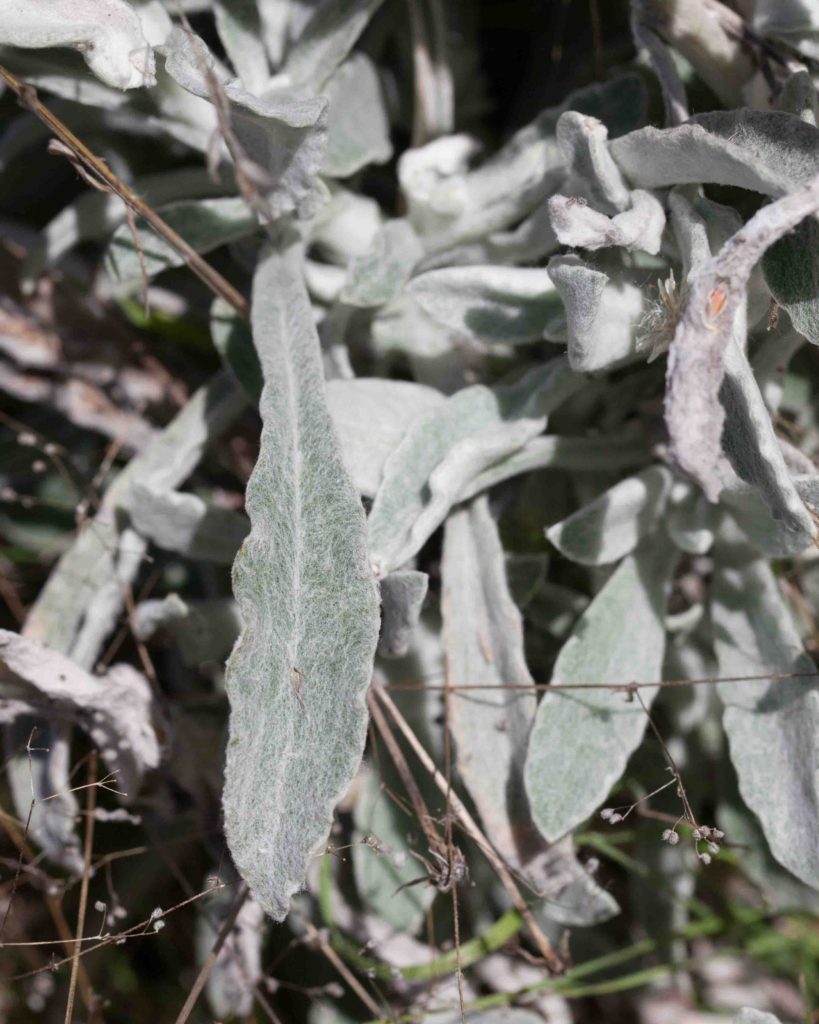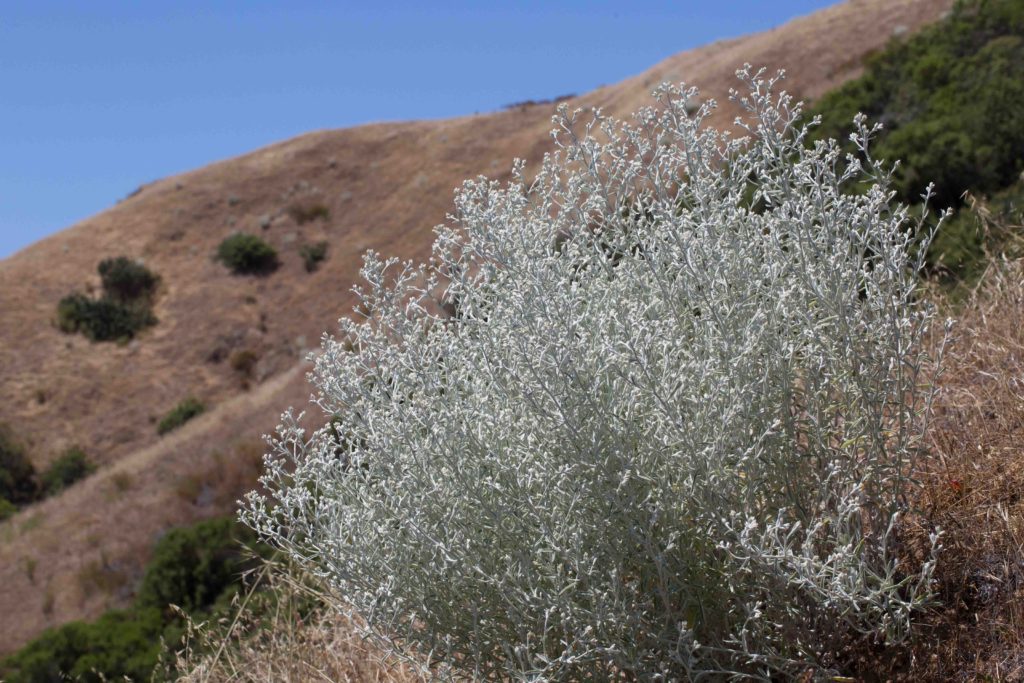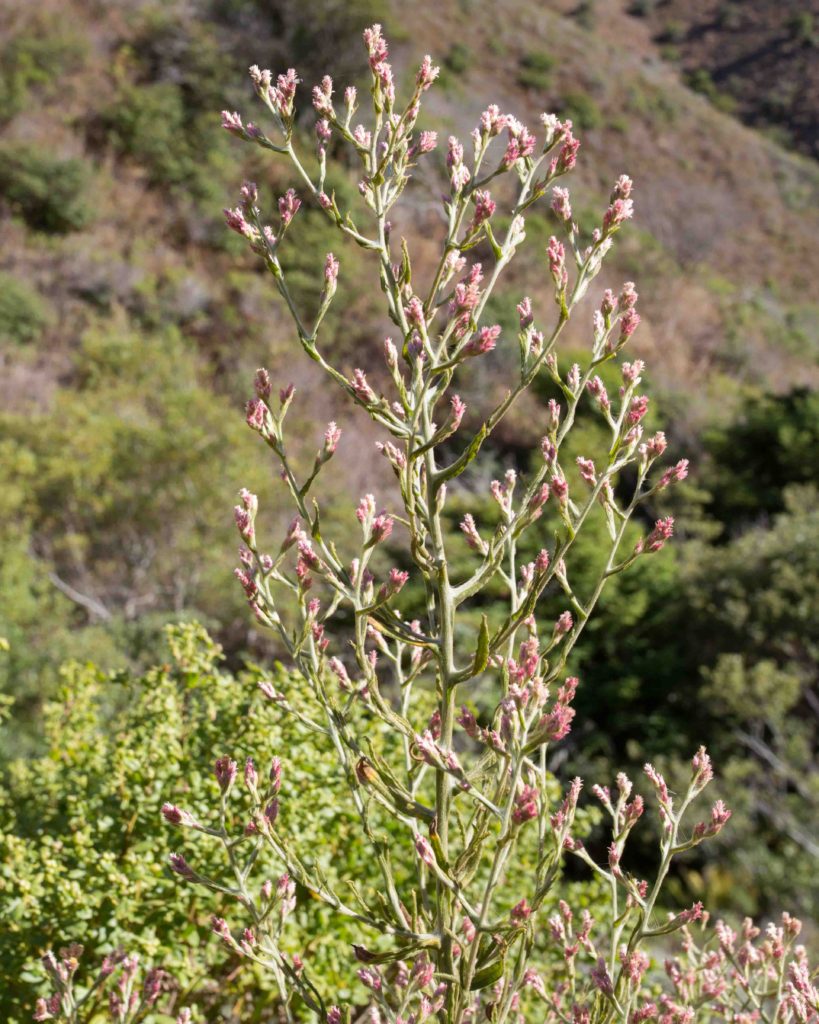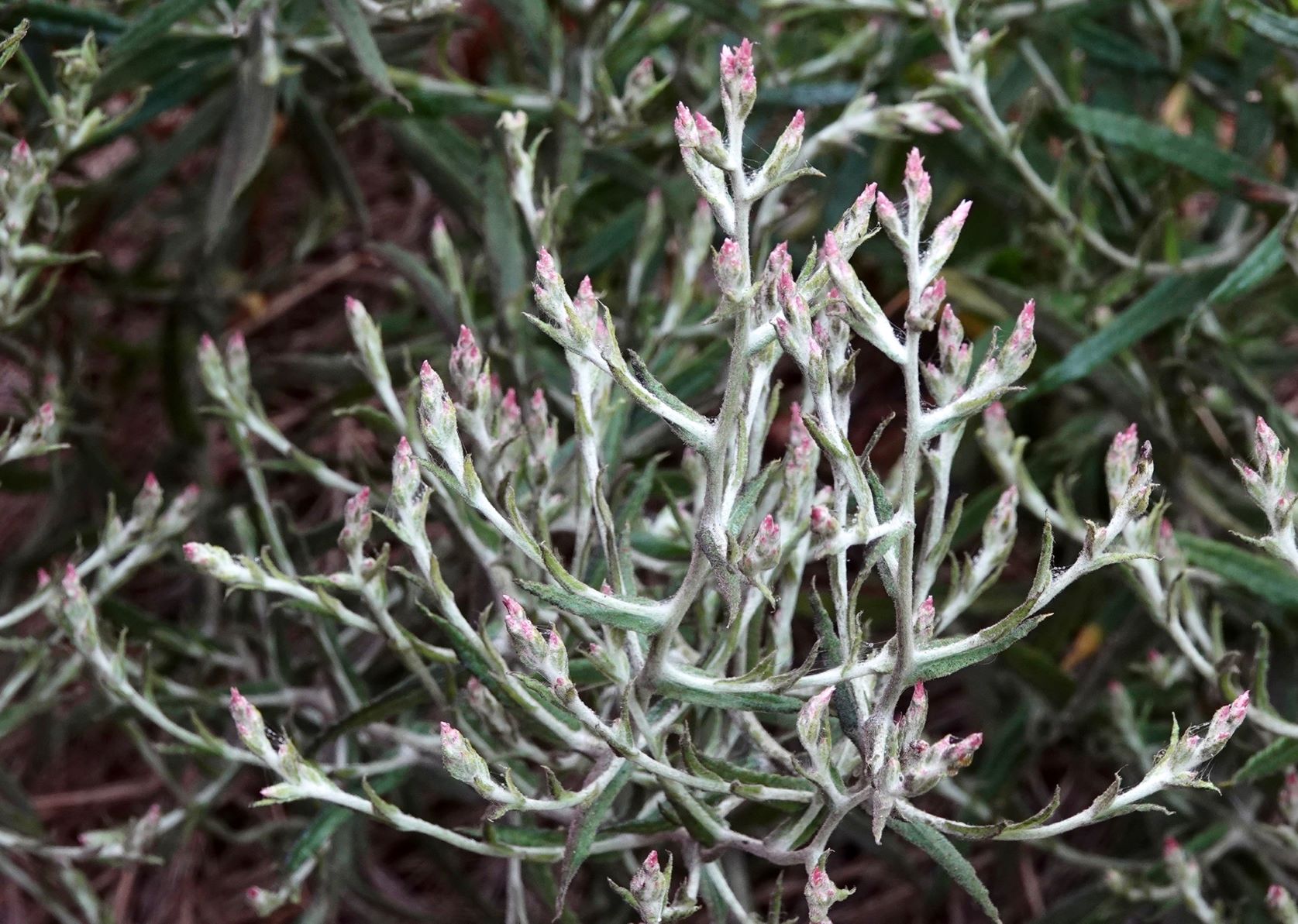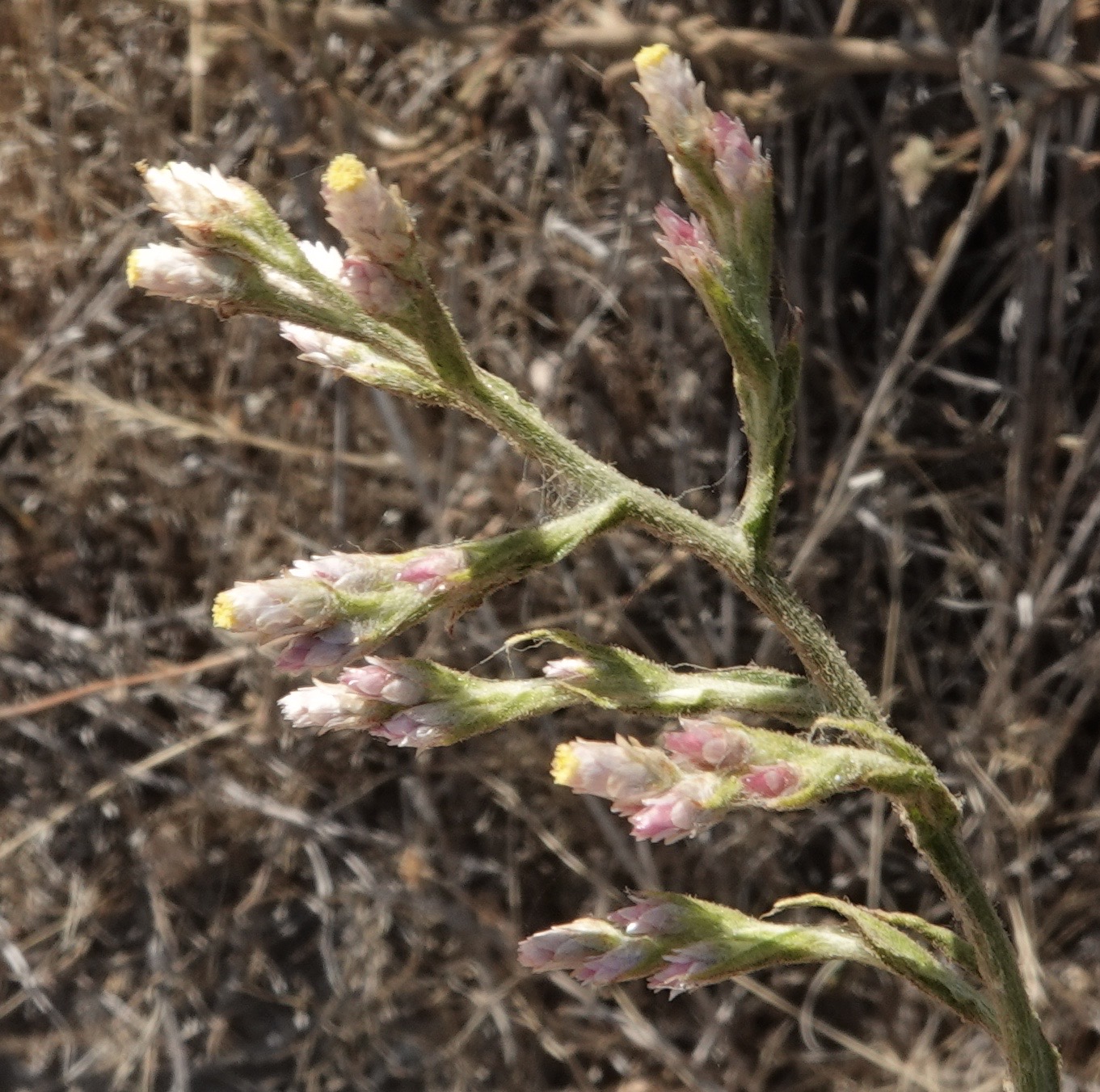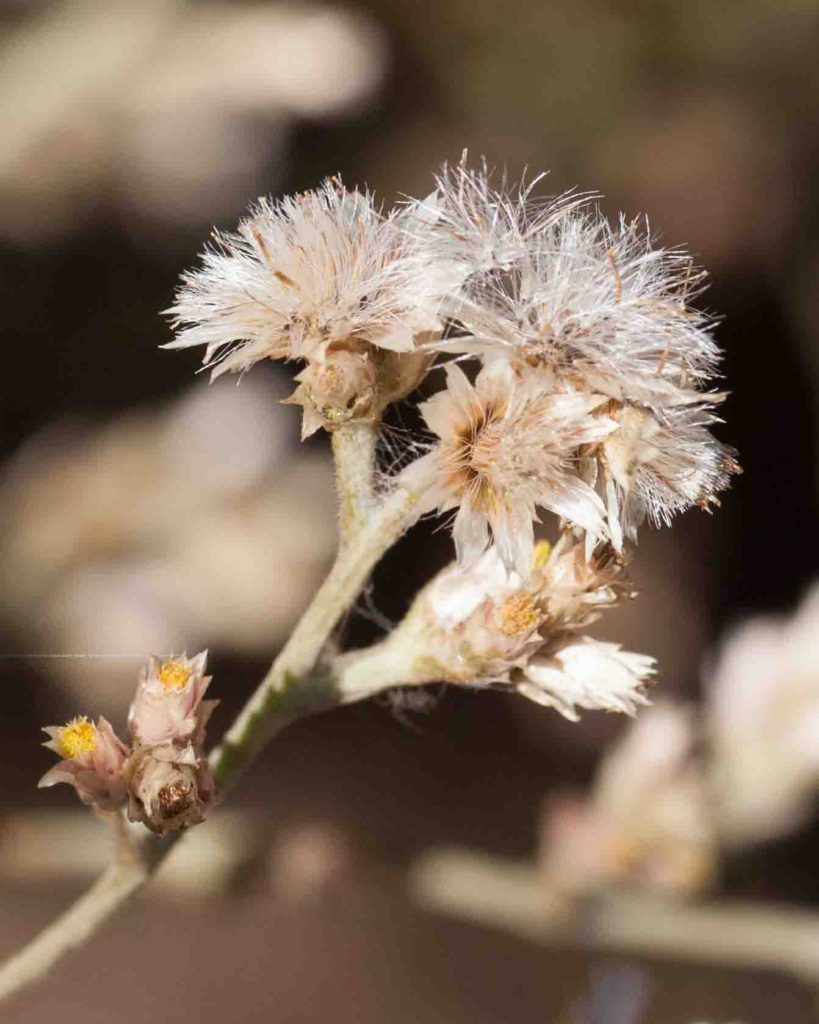Asteraceae: Sunflower Family – Gnaphalieae (Cudweed) Tribe – 1
The Sunflower family is a very large family with over 25,000 members. Botanists subdivide the family into a number of tribes, of which 14 are present in Monterey County. Members of the Gnaphalieae or Cudweed Tribe lack ray flowers, and usually have tight heads with inconspicuous disk flowers only. This page covers some of the larger species. Some of them have decurrent leaves, where the leaf base extends down the stem.
Pearly Everlasting – Anaphalis margaritacea
Blooms:
July–Oct
Plan Height:
20–80 cm
Flower Size:
Small cluster
Origin:
Native
Habitat:
Openings in woods, along streams and on roadsides
Notes:
Often confused with California Cudweed (Pseudognaphalium californicum, see below). However, this is easily distinguished by looking at the underside of the leaves, which are white to gray and tomentose. The leaves are not decurrent (i.e., the leaf base does not extend down the stem). It has only disk flowers, which are yellow, surrounded by bright white petal-like phyllaries in 8–12 series. Stems are usually white and tomentose. Photo #1 by CJH.
Fragrant Everlasting – Pseudognaphalium beneolens
Blooms:
June–Oct
Plant Height:
30–110 cm
Flower Size:
Small cluster
Origin:
Native
Habitat:
Open, dry places
Notes:
Very similar to White Everlasting (Pseudognaphalium microcephalum, see below), which also has a pale gray, tomentose appearance. However, this species is more greenish-white in color, and is most easily distinguished by the shape of its leaves, which are generally linear and also noticeably decurrent. Despite the name, it has little or no scent. The branches tend to be ascending, rather than spreading as with White Everlasting.
Bioletti’s Cudweed – Pseudognaphalium biolettii
Blooms:
Apr–June
Plant Height:
20–120 cm
Flower Size:
Small cluster
Origin:
Native
Habitat:
Dry, open places
Notes:
Similar to California Cudweed (Pseudognaphalium californicum, see below), but the upper stem parts are persistently tomentose, and the leaves are clasping but not decurrent. The leaf margin may be rolled under. The upper side of the leaves is bright green and may be tomentose, and the underside is generally white-tomentose. The phyllaries are in 4–5 series, shiny and white (sometimes pink). The leaves are scented with a spicy aroma.
California Cudweed / Everlasting – Pseudognaphalium californicum
Blooms:
Apr–July
Plant Height:
20–130 cm
Flower Size:
Medium cluster
Origin:
Native
Habitat:
Wooded slopes & disturbed places
Notes:
The stems are green and may be tomentose. The flowers look white from a distance, but these are the phyllaries, which are in 7–10 series and may be white to pink. The disk flowers are small and yellow, barely peeping out from the surrounding phyllaries (see photo #2). There are no ray flowers. The heads remain closed until long after fertilization, finally opening when the fruits are ready, which are a tangle of white thread-like pappuses (photo #3). After the fruits drop, what remains is an open disk of phyllaries, stained brown. This plant can easily be mistaken for Pearly Everlasting (Anaphalis margaritacea, see above). However, this blooms earlier in the year, and is easily distinguished by its leaves, which are green on both sides. The leaves are decurrent (the leaf base extends down the stem, see photo #4), and the leaf margin may be rolled under. The leaves are very aromatic, with a curry-like odor. Photos #1 and 3 by CJH.
White Everlasting – Pseudognaphalium microcephalum
Blooms:
June–Aug
Plant Height:
30–100 cm
Flower Size:
Small cluster
Origin:
Native
Habitat:
Dry slopes & open places
Notes:
Very similar to Fragrant Everlasting (Pseudognaphalium beneolens, see above), which also has a pale gray, tomentose appearance. This species is most easily distinguished by the shape of its leaves, which are generally narrowly oblanceolate, not decurrent, and definitely wider. Branches are spreading, rather than ascending as with Fragrant Everlasting.
Pink Everlasting – Pseudognaphalium ramossissimum
Blooms:
July–Sept
Plant Height:
50–150 cm
Flower Size:
Small
Origin:
Native
Habitat:
Dry slopes and open places
Notes:
This plant may have pink, yellow or white colored petals. To identify it, look for its open, branching growth habit, which is unlike any of the other members of this genus. Leaves are green above and below, wholly lacking the woolliness found in some of the other cudweeds. Photos #2-3 by CJH.
